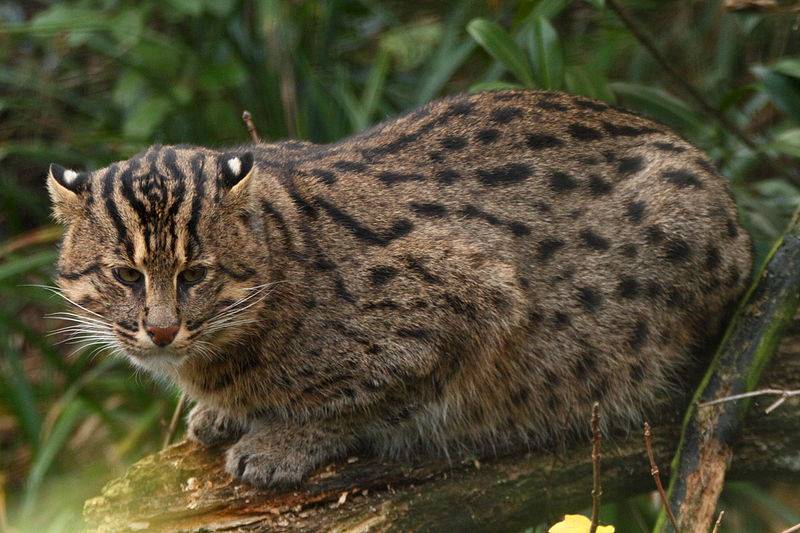Endangered fishing cat finally ‘captured’ on camera at Panna Tiger Reserve
Panna Tiger Reserve, in Madhya Pradesh, famous for its big cats, is celebrating because it now has photographic evidence that the elusive fishing cat is alive and well in the area near the banks of the river Ken.


The fishing cat is twice the size of the domestic. Photo: maxpixel
Panna, Madhya Pradesh
Around the banks of the Ken river that flows through the Panna Tiger Reserve in Madhya Pradesh, is the natural habitat of the fishing cat (Prionailurus viverrinus). And, on August 13, there was a tremor of excitement amongst the forest officials at the reserve because a camera trap had captured the image of the rare and elusive cat for the first time ever.
The tiger reserve’s official twitter handle proudly showed the picture of the cat and stated: another jewel in the crown of Panna Tiger Reserve. It is cause for celebration as the numbers of the fishing cat are fast dwindling and it finds itself on the endangered list.
Although the fishing cat was first photographed on January 11, 2019, the confirmation about the presence of the endangered specie was announced on August 13, 2021.
Explaining the reasons behind the delay in the announcement, Uttam Kumar Sharma, field operator of the tiger reserve, told Gaon Connection that it requires intensive analysis of the photograph of a rare animal to confirm that the animal captured on camera is indeed the endangered specie that we believe it to be.
“So more than two years after it was photographed, we announced the sighting of fishing cat at Panna on August 11,” Sharma added.
According to Schedule 1 of the Wild Life (Protection) Act, 1972, hunting the fishing cat is forbidden.
Also Read: Heera and Panna, the inseparable tiger siblings of Panna Tiger Reserve, part ways
Home and safe for now
“Photographic confirmation that the natural habitat of the fishing cat lies in central India is definitely good news,” Sharma, field operator of the tiger reserve, told Gaon Connection. Wildlife researchers who are interested in the fishing cat can now come here to do their field research, Sharma added.
“The cameras were installed at the core of the reserve in order to document wildlife in those specific areas. We are making efforts to put cameras in the other areas too,” Sharma informed.

Also Read: Tiger Dad wins custody of his cubs at Panna Tiger Reserve
The diet of the fishing cat, as its name suggests, consists almost entirely of fish and the Ken river flowing through the reserve, has plenty of fish making the area a natural habitat for the cat. The river flows for about 55 kilometres through the tiger reserve and while there has been some evidence of the fishing cat prowling the area, this is the first time there has been photographic proof.
“Many years ago, I spotted a fishing cat at Pipertola grassland, on the bank of the Ken river. But I was at a considerable distance and I could not photograph it,” Shyamendra Singh, wildlife enthusiast and former member of Madhya Pradesh Wildlife Board, recollected to Gaon Connection. “This photographic evidence proves that the fishing cat is extant in these parts,” he added happily.

Also Read: Buffer zones around tiger reserves in Madhya Pradesh open for monsoon tourism
The area from to Magra Dabri inside the Panna Tiger Reserve was the beat of the fishing cat. The river offers a wealth of fish for the cats and the environment is best suited for them, Singh explained. The fishing cat is twice the size of the domestic cat, he added.
Read the story in Hindi

